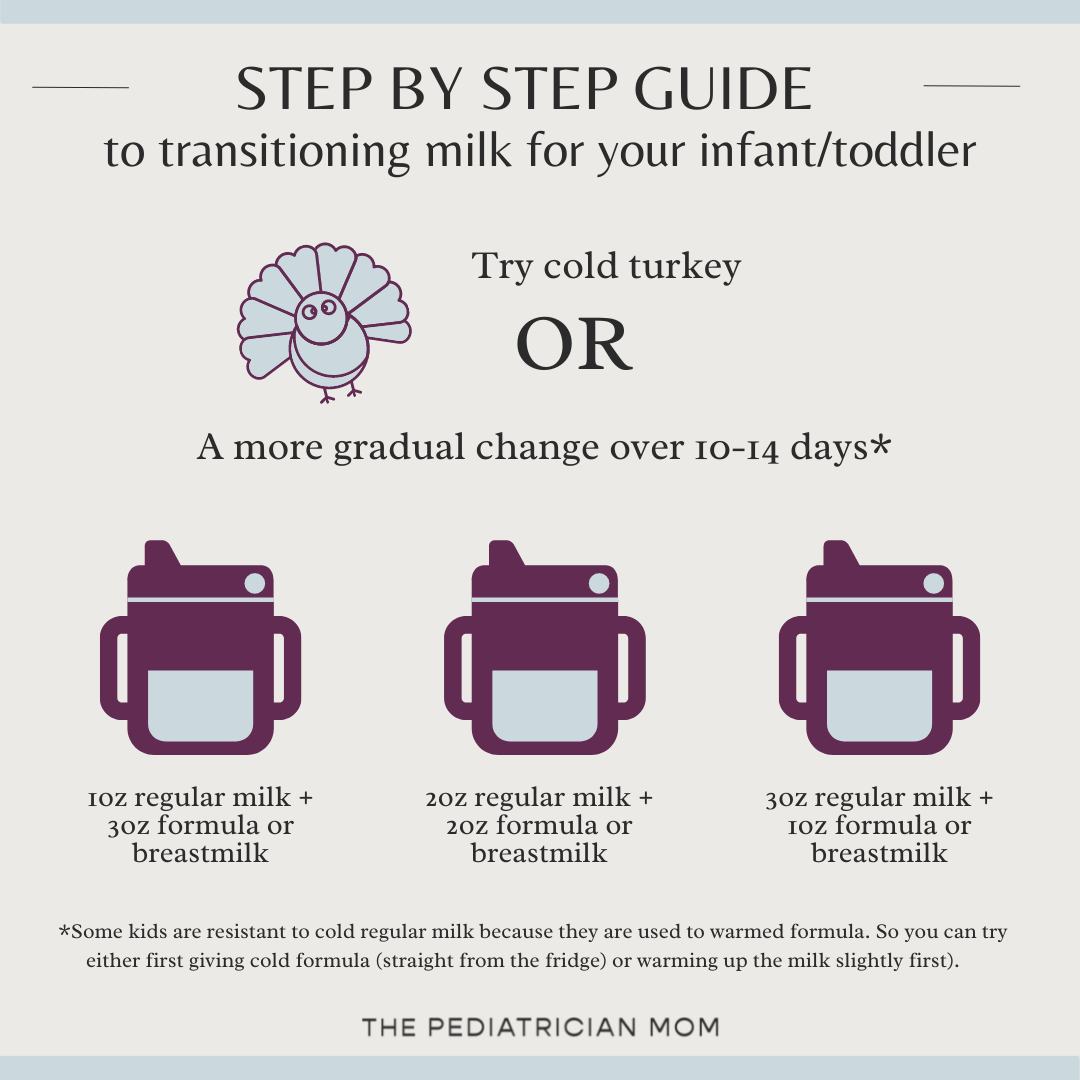Transitioning Milk: a how-to guide
As you approach baby’s first birthday, no doubt you have thought about transitioning milk.
This is one of the most common questions we are asked at the 12mo check up. Here is everything you need to know.
Do you even need to switch?
The first question to address is why you even need to switch. We recommend only breastmilk or formula before the age of 1 because these are the most nutritionally dense options. But after a year of age, our goal is for our toddlers (yes, you are about to have a toddler!!) to get the majority of their nutrition from solid food.
The Pediatrician Mom Tip: For babies getting breast milk, don’t feel like you have to stop. Do what feels right for you and your baby. But it is important to think of milk as an adjunct rather than as a primary source of nutrition.
For formula: There are a lot of companies that try to sell “toddler formula” and convince parents this is what you need. You don’t. Toddlers do not need formula unless there is something else going on, like an underlying chronic condition, malabsorption, etc. And if there is, then your pediatrician will guide you.
What type of milk?
I have a post on the pros and cons of cow’s milk, as well as another on milk alternatives. You can also head over to guides to download a cheat sheet that breaks down how different alternative milks compare to each other.
In general, your goal is to make sure your child is getting sufficient calcium, vitamin D, and protein and there are many other ways to get this into their diet. Check out this post to figure out what your child’s calcium/vitamin D goals are based on age.
Okay, so we’re going to switch. But how do I do it?
You can either go cold turkey and switch, or if your child is more savvy (or sensitive), you can do a more gradual change over 10-14 days.
Most children handle the transition better than you expect.
Trouble shooting
My child seems resistant to the change
Sometimes resistance is related more to milk temperature rather than taste, so for those kids you can either do cold formula or breastmilk for a few days (straight out of the fridge) or warm the milk to begin with.
But to save you extra work in the future, once they’re used to regular milk, start to decrease the temperature!
The Pediatrician Mom Tip: Cold milk will not make your child sick or cause other problems.
My child simply won’t drink (or is allergic to) milk
This is actually okay. Children do not need regular milk after the age of 1, although it can be a useful way to get certain nutrients into them as they become more picky. Check out my other post for a review of Calcium and Vitamin D needs, along with some quick ideas for sources of these nutrients. I have an extensive list on Instagram with more ideas for foods that are vitamin D/calcium rich as well.
Do I give them the regular milk in a bottle or cup?
For many infants, the bottle of milk is part of a night-time ritual. Unfortunately, drinking whole milk right before bed (without brushing) can cause cavities. Aim to wean the bottle completely after your child is a year of age if you can.
If you offer the milk in a cup and your child refuses, the solution is not to give it to them in the bottle, but to realize that milk is not an essential part of their diet.
My child seems to have constipation/diarrhea/gas after we made the switch
During the transition, some children have changes in their stooling patterns or the way their gut functions. If this is the case, go back to a more gradual transition and realize it may take 2-4 weeks for the gut to adjust. If the constipation/diarrhea persists, you should discuss with your pediatrician.
How much milk is too much after age 1?
In general, nutrition after age 1 should come primarily from food. We recommend limiting milk to 16-20 ounces maximum daily.
To download a free cheat sheet that compares the protein, fat, vitamin D and calcium content of the common milk alternatives, head over to the “guides” section of my website!
The milk transition is a huge step as your child becomes a “toddler” - it can feel overwhelming!
My biggest piece of advice? Don’t overthink it!




